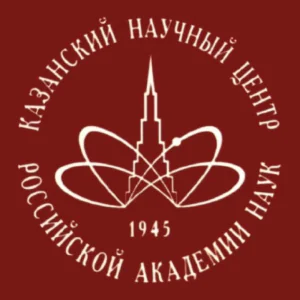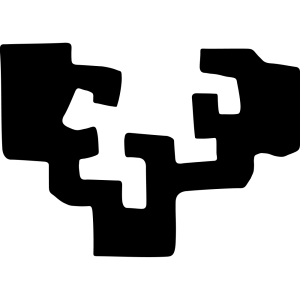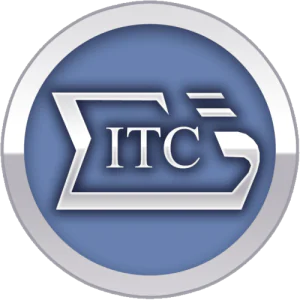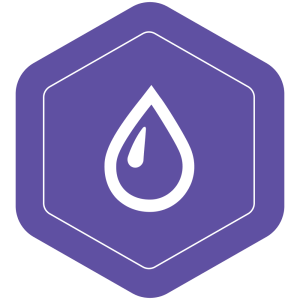Heavy Atom Free Singlet Oxygen Generation: Doubly Substituted Configurations Dominate S1 States of Bis-BODIPYs
Publication type: Journal Article
Publication date: 2012-05-02
scimago Q2
wos Q1
SJR: 0.737
CiteScore: 6.1
Impact factor: 3.6
ISSN: 00223263, 15206904
PubMed ID:
22530939
Organic Chemistry
Abstract
S(0), S(1), and T(1) states of various orthogonal 8,8' and 8,2'-bis-boradiaza-s-indacene (BODIPY) dyes, recently (Angew. Chem., Int. Ed.2011, 50, 11937) proposed as heavy atom free photosensitizers for O(2)((1)Δ(g)) generation, were studied by multireference quantum chemical approaches. S(0)→S(1) excitation characteristics of certain bis-BODIPYs are shown to be drastically different than the parent BODIPY chromophore. Whereas a simple HOMO→LUMO-type single substitution perfectly accounts for the BODIPY core, S(1) states of certain orthogonal bis-BODIPYs are described as linear combinations of doubly substituted (DS) configurations which overall yield four electrons in four singly occupied orbitals. Computed DS character of S(1), strongly correlated with facile (1)O(2) production, was presumed to occur via S(1)→T(1) intersystem crossing (ISC) of the sensitizer. Further confirmation of this relation was provided by newly synthesized BODIPY derivatives and comparison of spectroscopic properties of their dimers and monomers. Near-IR absorption, desired for potential photodynamic therapy applications, was not pursuable for bis-chromophores by the standard strategy of π-extension, as DS singlet states are destabilized. Decreased exchange coupling in π-extended cases appears to be responsible for this destabilization. Comparisons with iodine incorporated bis-BODIPYs suggest that the dynamics of (1)O(2) generation via DS S(1) states are qualitatively different from that via ISC originating from heavy atom spin-orbit coupling. Although red-shifting the absorption wavelength to enter the therapeutic window does not seem attainable for orthogonal bis-BODIPYs with DS S(1) states, modifications in the chromophore cores are shown to be promising in fine-tuning the excitation characteristics.
Found
Nothing found, try to update filter.
Found
Nothing found, try to update filter.
Top-30
Journals
|
1
2
3
4
5
6
7
8
|
|
|
Journal of Organic Chemistry
8 publications, 6.78%
|
|
|
Journal of Physical Chemistry C
7 publications, 5.93%
|
|
|
Organic Letters
6 publications, 5.08%
|
|
|
Dyes and Pigments
5 publications, 4.24%
|
|
|
Chemistry - A European Journal
5 publications, 4.24%
|
|
|
Chemical Communications
5 publications, 4.24%
|
|
|
Journal of Physical Chemistry Letters
4 publications, 3.39%
|
|
|
Journal of Materials Chemistry C
4 publications, 3.39%
|
|
|
Journal of Luminescence
3 publications, 2.54%
|
|
|
Coordination Chemistry Reviews
3 publications, 2.54%
|
|
|
Journal of Physical Chemistry B
3 publications, 2.54%
|
|
|
Chemical Society Reviews
3 publications, 2.54%
|
|
|
Physical Chemistry Chemical Physics
3 publications, 2.54%
|
|
|
Dalton Transactions
3 publications, 2.54%
|
|
|
Organic and Biomolecular Chemistry
3 publications, 2.54%
|
|
|
Russian Journal of General Chemistry
2 publications, 1.69%
|
|
|
Journal of Chemical Physics
2 publications, 1.69%
|
|
|
Photochemical and Photobiological Sciences
2 publications, 1.69%
|
|
|
Scientific Reports
2 publications, 1.69%
|
|
|
Angewandte Chemie - International Edition
2 publications, 1.69%
|
|
|
Angewandte Chemie
2 publications, 1.69%
|
|
|
Chemistry - An Asian Journal
2 publications, 1.69%
|
|
|
ChemPhotoChem
2 publications, 1.69%
|
|
|
Journal of Physical Chemistry A
2 publications, 1.69%
|
|
|
Journal of Chemical Theory and Computation
2 publications, 1.69%
|
|
|
RSC Advances
2 publications, 1.69%
|
|
|
Wiley Interdisciplinary Reviews: Computational Molecular Science
1 publication, 0.85%
|
|
|
Journal of Porphyrins and Phthalocyanines
1 publication, 0.85%
|
|
|
International Journal of Molecular Sciences
1 publication, 0.85%
|
|
|
Frontiers in Chemistry
1 publication, 0.85%
|
|
|
1
2
3
4
5
6
7
8
|
Publishers
|
5
10
15
20
25
30
35
40
|
|
|
American Chemical Society (ACS)
37 publications, 31.36%
|
|
|
Royal Society of Chemistry (RSC)
28 publications, 23.73%
|
|
|
Wiley
21 publications, 17.8%
|
|
|
Elsevier
16 publications, 13.56%
|
|
|
Springer Nature
7 publications, 5.93%
|
|
|
Pleiades Publishing
2 publications, 1.69%
|
|
|
AIP Publishing
2 publications, 1.69%
|
|
|
World Scientific
1 publication, 0.85%
|
|
|
MDPI
1 publication, 0.85%
|
|
|
Frontiers Media S.A.
1 publication, 0.85%
|
|
|
Societa Italiana di Fisica
1 publication, 0.85%
|
|
|
Autonomous Non-profit Organization Editorial Board of the journal Uspekhi Khimii
1 publication, 0.85%
|
|
|
5
10
15
20
25
30
35
40
|
- We do not take into account publications without a DOI.
- Statistics recalculated weekly.
Are you a researcher?
Create a profile to get free access to personal recommendations for colleagues and new articles.
Metrics
118
Total citations:
118
Citations from 2024:
9
(7.62%)
Cite this
GOST |
RIS |
BibTex |
MLA
Cite this
GOST
Copy
Duman S. et al. Heavy Atom Free Singlet Oxygen Generation: Doubly Substituted Configurations Dominate S1 States of Bis-BODIPYs // Journal of Organic Chemistry. 2012. Vol. 77. No. 10. pp. 4516-4527.
GOST all authors (up to 50)
Copy
Duman S., Dede Y. Heavy Atom Free Singlet Oxygen Generation: Doubly Substituted Configurations Dominate S1 States of Bis-BODIPYs // Journal of Organic Chemistry. 2012. Vol. 77. No. 10. pp. 4516-4527.
Cite this
RIS
Copy
TY - JOUR
DO - 10.1021/jo300051v
UR - https://doi.org/10.1021/jo300051v
TI - Heavy Atom Free Singlet Oxygen Generation: Doubly Substituted Configurations Dominate S1 States of Bis-BODIPYs
T2 - Journal of Organic Chemistry
AU - Duman, Selin
AU - Dede, Yavuz
PY - 2012
DA - 2012/05/02
PB - American Chemical Society (ACS)
SP - 4516-4527
IS - 10
VL - 77
PMID - 22530939
SN - 0022-3263
SN - 1520-6904
ER -
Cite this
BibTex (up to 50 authors)
Copy
@article{2012_Duman,
author = {Selin Duman and Yavuz Dede},
title = {Heavy Atom Free Singlet Oxygen Generation: Doubly Substituted Configurations Dominate S1 States of Bis-BODIPYs},
journal = {Journal of Organic Chemistry},
year = {2012},
volume = {77},
publisher = {American Chemical Society (ACS)},
month = {may},
url = {https://doi.org/10.1021/jo300051v},
number = {10},
pages = {4516--4527},
doi = {10.1021/jo300051v}
}
Cite this
MLA
Copy
Duman, Selin, et al. “Heavy Atom Free Singlet Oxygen Generation: Doubly Substituted Configurations Dominate S1 States of Bis-BODIPYs.” Journal of Organic Chemistry, vol. 77, no. 10, May. 2012, pp. 4516-4527. https://doi.org/10.1021/jo300051v.




















